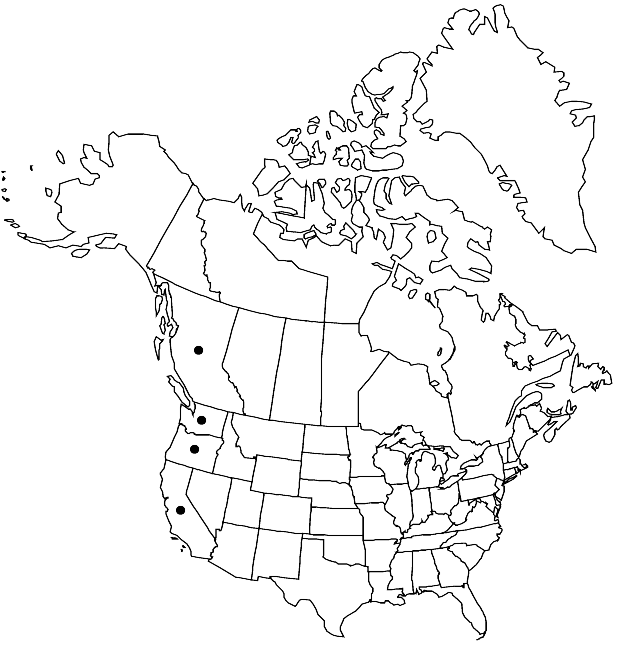Cardamine nuttallii
Bull. Calif. Acad. Sci. 2: 389. 1887.
Perennials; glabrous or sparsely pubescent. Rhizomes (tuberiform, fragile), with ovoid to oblong or cylindrical nodal swellings, slender, 2–5 mm diam., (fleshy). Stems erect, unbranched, 0.5–2(–3) dm, glabrous or sparsely pubescent distally. Rhizomal leaves simple or 3 (or 5)-foliolate, (3–)4–20(–25) cm, leaflets petiolulate or subsessile; petiole (2–)3–18(–21) cm; lateral leaflets (when present) petiolulate to subsessile, blade similar to terminal, sometimes smaller; terminal leaflet (subsessile or petiolule 0.2–3 cm), blade (simple leaf or terminal leaflet) reniform to suborbicular or ovate to oblong, (0.9–)1.3–4(–5.2) cm × (8–)12–50(–70) mm, base cordate to obtuse, margins crenate, dentate, or 5–7-lobed, (apiculae terminating teeth or lobes, surfaces glabrous). Cauline leaves 1–3, 3 (or 5)-foliolate, (appearing palmate), petiolate, leaflets petiolulate or sessile; petiole (0.2–)0.5–2(–3) cm, base not auriculate; lateral leaflets sessile, blade similar to terminal, smaller; terminal leaflet petiolulate or sessile, blade broadly ovate to oblong or linear, (0.5–)1–3.5(–6) cm, margins usually entire or dentate, rarely lobed. Racemes ebracteate. Fruiting pedicels ascending to divaricate, 10–35 mm. Flowers: sepals oblong, 3.5–5 × 1.5–2 mm, lateral pair saccate basally; petals usually purple to pale pink, rarely white, obovate, 10–15 × 4–7.5 mm, (not clawed, apex rounded); filaments: median pairs 5–8 mm, lateral pair 3.5–5 mm; anthers oblong, 1.5–2 mm. Fruits linear, 2.5–5.6 cm × 2–2.3 mm; ovules 8–16 per ovary; style 4–8 mm. Seeds dark brown, oblong, 2–2.5 × 1.4–1.6 mm.
Phenology: Flowering Mar–May.
Habitat: Open pine forests, damp woods, shaded bottomlands, mossy slopes, streamsides, shaded and moist hillsides
Elevation: 150-1000 m
Distribution

B.C., Calif., Oreg., Wash.
Discussion
The infraspecific taxonomy of Cardamine nuttallii has been based almost entirely on the division and margin of rhizomal leaves. The treatments by O. E. Schulz (1903), L. E. Detling (1937), and R. C. Rollins (1993), though utilizing the same characters, varied considerably, especially in the application of names to varieties. The absence of rhizomal leaves on most specimens makes varietal determination an almost impossible task. Furthermore, leaf morphology is so highly variable that it is not useful for formally recognizing some of the other variants in the species. We therefore prefer to not subdivide the species.
Selected References
None.